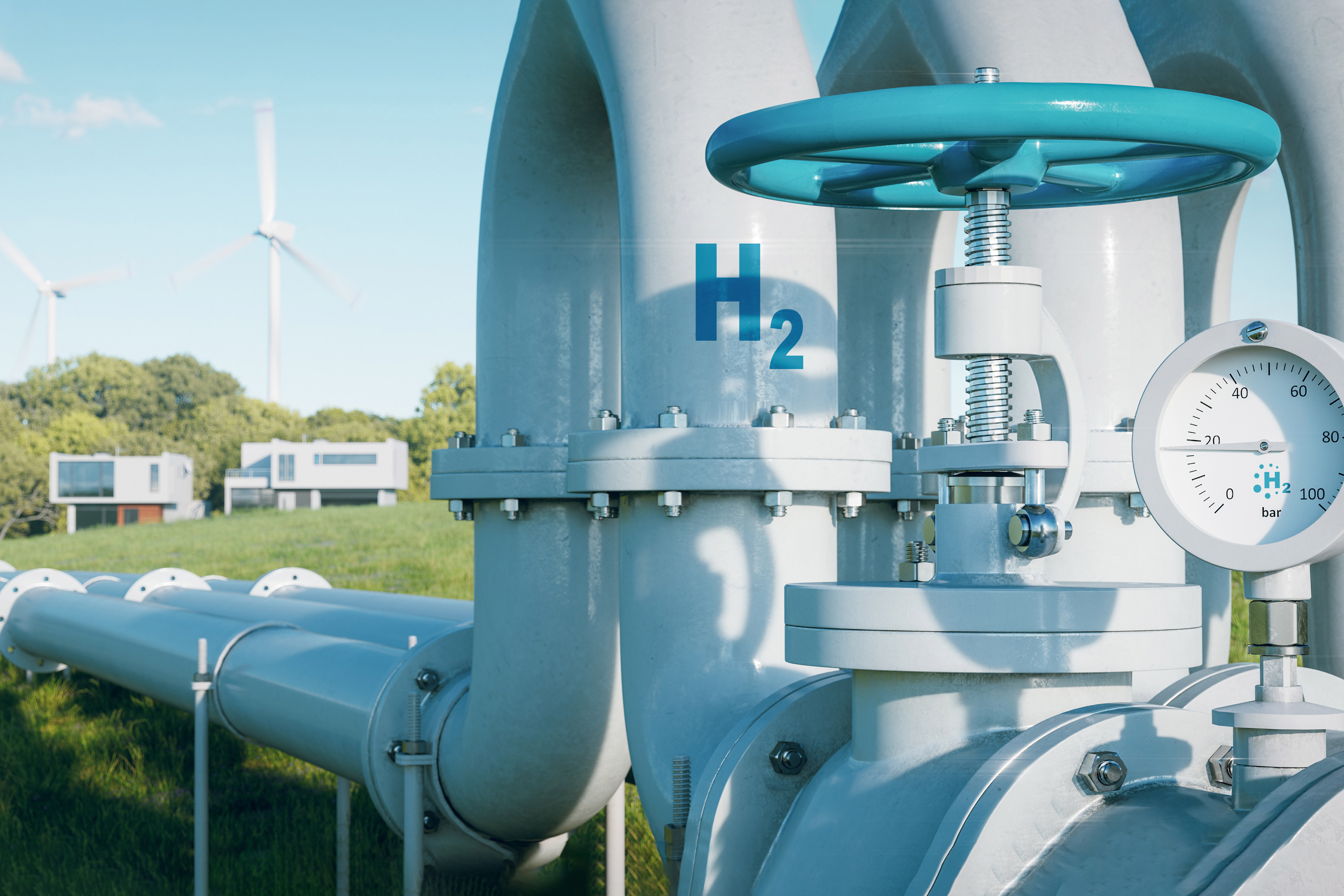EY refers to the global organization, and may refer to one or more, of the member firms of Ernst & Young Global Limited, each of which is a separate legal entity. Ernst & Young Global Limited, a UK company limited by guarantee, does not provide services to clients.

The EY organization brings North American utilities together to advance their thinking on the latest renewable energy and exchange learnings.
In brief
- Hydrogen Realized — an EY-hosted North American think tank — gathered utility leaders to explore the possibilities and practicalities of hydrogen.
- With demands for future energy sources to be affordable, reliable and sustainable, hydrogen is a viable alternative.
- While there are many obstacles to overcome, the effort could be worth it for the environmental benefits and the long-term value it can create.
When it comes to global warming, we’ve heard the predictions and many in the energy field are heeding the warnings. But with less than two decades left to reverse climate change, time is ticking. The race — to develop alternative and globally scalable, low-carbon sources of energy — is on.
For global energy companies, disruption is a foregone conclusion — and innovation an urgent priority. Sustainable sources of energy are a start.
But many are exploring a newer alternative — hydrogen — as the next “net-zero hero” on the horizon.. It’s safe and clean, and emits only vapor and oxygen when used. And with governments becoming more aware of a need to push carbon-free energy alternatives, hydrogen is gaining momentum and can play a pivotal role in energy transition.
“There’s a lot of interest in hydrogen,” says Andy Grainger, EY Canada Power & Utilities Consulting Leader. “It’s one of those technologies that’s leading edge, but not as advanced as others when you think about energy transition. There’s a lot of curiosity and questions around how we get regulatory approvals, or government incentives, for example. And from an operational perspective, what the right path forward should be.”
Chapter 1
Bringing great minds together
Hydrogen Realized brought utility leaders together to explore hydrogen’s benefits and opportunities.
To better help determine that path, the EY organization hosted Hydrogen Realized, a North American think tank aimed at navigating the energy transition focused on the possibilities — and practicalities — of hydrogen. More than 20 utility leaders from Canada and the US engaged in an exchange on hydrogen’s benefits and opportunities and took a deeper look at some pilots and active case studies underway, including the UK’s Project Union, a massive undertaking to repurpose its existing pipeline as the backbone that will serve the country’s 100% hydrogen economy by the early 2030s.
The event was third in the EY global Energy Transition Realized series, creating important synergies and encouraging those in the industry to learn through each other’s efforts in tackling the energy crisis. Originally kicked off with a look at China’s e-mobility electrification strategy in 2019, the series continued with electrification and carbon sequestration demonstrations as part of an exploration tour in Norway — whose ambitious climate targets include reducing emissions by 55% by 2030.
It was during the demonstrations in Norway that plans for a Canadian event unfolded, segueing into an opportunity to observe cutting-edge initiatives underway with EY client and Ontario energy company, Enbridge Gas — the first North American utility to successfully advance the use of hydrogen from theoretical to tactical.
Chapter 2
The road to the future
In the race against the climate change clock, renewable energy is just starting to take shape.
Participants visited Enbridge’s hydrogen production plant, where the utility is not only electrolyzing water to yield green hydrogen but blending it into the natural gas supply of 3,600 neighboring homes, lowering emissions and their carbon footprint. Attendees also visited the utility’s Parkway compressor station.
Attendees were inspired by Enbridge’s leadership, thoughtful and responsible safety and engineering efforts, and the ongoing work the company is doing to engage with its local community. But they were particularly wowed by the small size of the hydrogen-producing electrolyzer — making it both practical and conducive to implementation just about anywhere.
“From the plant tour, we learned it’s feasible. It can be done,” explained Mark Scherluebbe, EY-Parthenon Senior Director, Power & Utilities and Strategy, Ernst & Young LLP. “It’s a relatively small footprint to cover a large area, so building more sites like this could help to reduce the overall effects on the environment. It’s certainly a step in the right direction, but there are other challenges to be overcome.”
From monster to minutiae, obstacles abound — whether securing financing, retrofitting pipelines and other infrastructure or managing storage and transport logistics. Early engagement with regulators will be necessary to prevent long permitting processes that can delay net-zero targets, and partnership with industry will be needed to convert and ensure end-user compatibility of in-home appliances, like furnaces, gas stoves or barbecues.
But as we face an energy trilemma that demands future sources of energy be affordable, reliable and sustainable, the effort could very well be worth it. Not just for the good it does the environment but for the long-term value it can create. A nascent industry with no dominant technology, renewable energy — and the future of hydrogen, in particular — is just starting to take shape. On the brink of the next industrial revolution, governed by clean energy, technologies that mature and break through faster will be a heady proposition for investors seeking first-mover advantage in our race against the climate change clock.
“It’s an avalanche that needs a start,” commented Anton Poryadin, EY-Parthenon Principal, Ernst & Young LLP, who presented a global view of hydrogen at the event. “But it will be difficult for an individual player to pull off — almost impossible. It will require a coordinated effort on the demand side, the supply side, and the regulatory side. It’s a new industry and a complex business that will require long-term thinking and partnering to build a working ecosystem.”
Chapter 3
Takes a village
The energy transition is a major challenge that will require collaboration and knowledge sharing.
Global Client Service Partner of Energy & Technology at Ernst & Young LLP David Lipschutz agrees, adding that the days of organizations being able to go it alone are over. “It’s going to take multi-level partnerships among utilities, equipment manufacturers, and technology innovators. We have utilities from North America together, and this is what they’re asking for. More collaboration, sharing the learnings and how we can drive towards a cleaner energy transition together.”
The “in-it-together” sentiment was echoed throughout the two-day event, with participants grateful for the opportunity to hash out similar challenges, ask questions of those who have gone before them and present a united front. The plant tours not only showcased what was possible, but learnings that attendees could take back to make new technologies real for stakeholders, regulators and others whose buy-in will offer critical support in the years to come.
“We have such a massive challenge in front of us with the energy transition. These utilities and our clients all need to benefit and learn from each other to make that a reality,” added Mark Hirschey, Principal, Power & Utilities, Ernst & Young LLP. “When you get people together that all work in the same industry but don’t know each other, the learnings are incredible. When we put our minds to it, we can really achieve this energy transition in a way that works for everybody.”
Since the conclusion of the Toronto event, the EY organization has hosted another group in Texas to discuss the evolution of batteries in conjunction with e-mobility. Additional sessions are being planned in early 2023 to further explore hydrogen and the customer transformation impacting energy companies.
Given the disruption on the horizon, Grainger confirms experiences like these are a differentiator for both the EY organization and clients. “We’re looking forward to continuing to share stories and see how we can weave them together to collectively move ahead from where we are. EY is happy to play a role in bringing everyone together and championing that collaboration. We look forward to continuing to do that going forward.”
Summary
Hydrogen is gaining momentum and can play a pivotal role in energy transition. With collaboration and knowledge sharing — like the Hydrogen Realized event — utilities can drive toward a cleaner energy transition together.
Related articles
An energy company’s transformation for the 21st-century customer
Learn how Xcel Energy is building trusted relationships with customers and helping lead the energy transition through innovative products and services.
Can hydrogen be the US net-zero hero?
Hydrogen is gaining attention as a fuel alternative because of its potential energy applications while helping to drive decarbonization. Learn more.
How EY can help
-
EY-Parthenon energy strategy consulting teams help C-suites drive future value-creation. Learn more.
Read more





